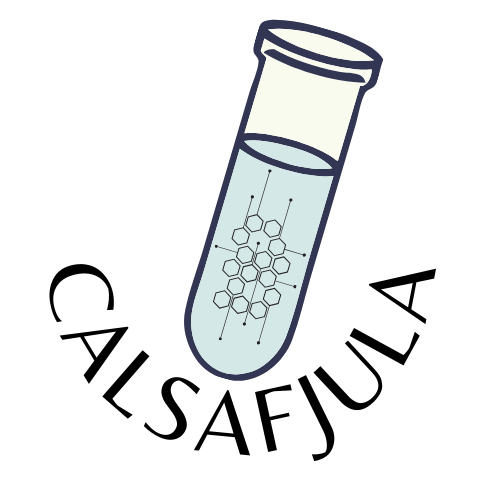Adapting to Federal Budget Cuts in Research: How STEM Organizations Can Innovate With Less
15 Minute Read

In today’s landscape of tightened federal budgets, America’s research and innovation engines are learning to run on leaner fuel. Recent cuts and policy shifts at government agencies have left many labs and startups scrambling. When Washington scales back funding for science, the effects trickle down to universities, companies, nonprofits, and startups that drive innovation on the ground. The question isn’t just what will we lose? but also how can we adapt?
The Ripple Effect of Budget Cuts on Innovation
Federal agencies like the NIH, NSF, NASA, and others have seen budget contractions and new restrictions that directly hit research initiatives. The impacts are widespread:
•University Research Slowdowns: Cuts at the federal level mean fewer grants for campus research. For example, the NIH’s proposal to cap indirect costs at 15% sent shockwaves through universities in early 2025. Schools reliant on those funds for lab maintenance and support staff suddenly faced huge shortfalls . Programs have been paused or downsized: NIH even canceled its summer internship program and NSF trimmed its undergrad research programs amid budget uncertainty . Some universities reacted by freezing faculty hires and reducing PhD student admissions to control costs . This means fewer opportunities for upcoming scientists and stalled projects in fields from medicine to engineering.
•Startups and Industry Feeling the Pinch: When public R&D funding shrinks, private sector innovation can suffer too. Biotech and tech startups often depend on federal grants and contracts (such as NIH grants or DoD SBIR/STTR awards) to develop early-stage technology. Now, many report being in jeopardy. The Trump administration’s recent NIH funding cuts and caps have raised alarms in the biotech industry . Companies like Yale-spinoffs Arvinas and Biohaven warned of impacts on hiring and R&D investment . In one case, a Yale-affiliated startup lost a critical NIH diversity supplement grant and with it, a key researcher – a direct result of funding being pulled mid-project . Such losses not only slow the startup’s progress but also represent a setback for medical innovation (and a career blown off course). Local economies and job markets take a hit as well: research-intensive companies and their partners contribute to regional employment, so cutbacks ripple out to suppliers and service providers .
•Nonprofits and Public Services in Limbo: It’s not just labs and companies; nonprofit organizations (often running STEM education programs, public health initiatives, or environmental projects) also rely on federal grants. When those funds vanish, communities feel the effect. A prominent example is Johns Hopkins University – while a private research university, it runs many public-health-focused programs via federal support. In 2024, Hopkins received over $4.8 billion in research funding, 88% from federal sources . A sudden “unexpected stoppage” of $800 million in U.S. Agency for International Development (USAID) funding this year left the institution reeling . That money supported programs in maternal health, disease prevention, and more. Hopkins’ leadership described the situation as “perplexing and distressing,” and warned of difficult budget decisions ahead . Similarly, nonprofits across sectors face tough choices – do they cut services, lay off staff, or find new funding – when government contracts dry up.
•Mission Critical Agencies Turning to Partners: Even federal agencies themselves are adapting by leaning on outside partners. NASA, for instance, has a mandate far bigger than its pocketbook – in 2023 its budget was only about 0.4% of total federal spending . With ambitious goals (Moon missions, Mars, climate monitoring) and limited funds, NASA has increasingly relied on commercial partnerships to get the job done . By contracting private companies (SpaceX, Blue Origin, etc.) for launch services and technology development, NASA stretches its dollars further. This model has allowed NASA to pursue projects that might be unattainable with public funding alone, and it illustrates a broader trend: public agencies partnering with industry to sustain innovation under fiscal constraints.
Across the STEM ecosystem, the message is clear – traditional funding streams are under pressure, and everyone from professors to CEOs feels the squeeze. But alongside the challenges, we’re seeing resilience and creativity emerge. Below, we explore actionable strategies that organizations are using to weather the storm and continue advancing innovation.
1. Diversify Funding Sources
Relying on a single source of funding is risky – even more so in uncertain times. STEM organizations are getting creative in finding new funding channels:
•Tap into Philanthropy and Foundations: Private foundations and philanthropists can be a lifeline for research and programs that lose federal backing. Many foundations, large and small, offer grants for scientific and educational endeavors. Building relationships with philanthropic funders (and aligning proposals with their missions) can open up new streams of support. Universities have long cultivated donors for endowed chairs and capital projects; now those development offices are focusing on raising funds for research continuity. A targeted campaign, for instance, might invite alumni to support a specific lab or encourage a major donor to sponsor an initiative that the government can’t fund this year.
•Crowdfunding and Community Support: Crowdfunding isn’t just for gadgets and art projects – scientists and innovators are using it to great effect. When grants grew scarce, young researchers at the University of Connecticut turned to the public for help. Two PhD students studying squid symbiosis launched a crowdfunding campaign to fund their project, bringing in many small donations from “cephalopod enthusiast” donors online . Not only did this provide crucial funds, it also forced the researchers to hone their science communication skills to appeal to a broad audience – a valuable side benefit. This approach is catching on: even well-resourced institutions like Stanford and MIT have used crowdfunding platforms to finance research ideas that might not fit traditional grants . Crowdfunding likely won’t replace federal grants at scale , but it can augment funding for specific projects, cover lab expenses, or support student researchers. It also generates public engagement and awareness of the work being done.
•State and Local Grants: In some cases, state governments, economic development agencies, or local authorities have programs to fund innovation (especially if it ties into regional growth or addresses local problems). These funds can sometimes fill gaps left by retreating federal dollars. For example, a state technology council might offer commercialization grants to startups, or a city might fund a research center if it promises job creation. Stay alert to these opportunities – they often have less competition than federal grants.
By broadening the funding base, organizations become more resilient. If one source falters, others can help sustain momentum. The process of seeking alternative funds can also sharpen an organization’s story and value proposition, as you must explain to new audiences why your work matters. Diversification is essentially a way to spread risk and ensure that the fate of your research or program isn’t tied to the whims of a single budget decision in Washington.
2. Forge Strategic Corporate Partnerships
Another powerful strategy is partnering with industry. Companies – from large corporations to agile startups – can be both sources of funding and collaborators for innovation. A well-structured partnership can advance the goals of both the research organization and the business:
•Sponsored Research and Joint Projects: Companies often seek cutting-edge research to inform their next products or to solve technical challenges. In a partnership model, a company provides funding (and sometimes equipment or expertise) to a university lab or nonprofit research center. In return, the company might get early access to findings, intellectual property rights, or the ability to license technologies. Real-world example: Pfizer’s $100 million, five-year collaboration with The Scripps Research Institute in California . Through this deal, Scripps received a significant influx of funding to pursue biomedical research, while Pfizer secured first rights to develop any drugs that emerge from the discoveries . This kind of win-win partnership accelerates science that might not attract immediate federal grants (because it’s high-risk or early-stage) and aligns it with a pathway to market through the corporate partner. Many universities are actively expanding their corporate partnership programs now, effectively saying: if federal support is shaky, let’s collaborate more with industry to keep our labs running.
•Facilities and Resource Sharing: Sometimes partnerships come in the form of shared infrastructure. A company could sponsor a research facility or provide access to its specialized equipment for academic researchers. Conversely, a university might open up its core labs (like advanced microscopy centers or testing facilities) for companies to use on a fee or collaboration basis. This sharing of resources reduces duplication and maximizes the use of expensive assets. It’s especially valuable when budgets are tight: partners can get the benefit of facilities without bearing all the costs themselves.
•Workforce and Talent Exchange: Partnerships can also help sustain the talent pipeline. For instance, a tech firm might fund a fellowship program that places PhD students or postdocs in the company’s R&D department for a year. The students get industry experience (and funding), and the company benefits from their expertise on specific projects. With some federal training grants in jeopardy, these corporate-funded fellowships or internship exchanges ensure emerging scientists and engineers keep learning and contributing. They also strengthen relationships between the company and the academic community.
•Innovation Incubators/Accelerators: Big companies sometimes run incubator or accelerator programs for startups and researchers working on relevant innovations. By joining or aligning with these, organizations can access corporate funding, mentorship, and networks. It’s a form of partnership where the company acts as a patron for innovation in areas it cares about. In return, the corporation stays at the forefront of new developments and may gain investment or acquisition opportunities. For startups facing the loss of a federal seed grant, an industry accelerator (or corporate venture capital) can be a lifeline that provides funds and validation.
Strategic partnerships with the private sector can replace or augment lost government funding, while also speeding up the translation of research into real-world impact. Of course, they require finding alignment between different cultures and goals – academic freedom and public mission need to mesh with commercial objectives. But when done right, partnerships can sustain not just funding, but the vibrancy and relevance of research. As one study noted, nonprofits facing funding cuts are increasingly looking to business collaborations to “increase access to new resources” . The key is to seek partners whose interests overlap with your mission and to establish clear, ethical agreements on how work is funded and results are shared.
3. Launch or Participate in Innovation Challenges
Necessity is the mother of invention – and one trend gaining traction is using innovation challenges and prize competitions to drive progress under constrained budgets. These challenges present a problem or goal and invite innovators to compete to solve it, often with a monetary prize or pilot contract for the winners instead of full funding for all participants. This model can stretch dollars and engage a wide pool of talent:
•Crowdsourcing Solutions: Open innovation challenges cast a wide net for ideas. Instead of funding one research team with $1 million to work on a problem, an agency or company might offer that $1M as a prize for whoever cracks it. This way, dozens of teams might work on the problem at their own expense, and the sponsor pays only for success. It’s a high-leverage approach: the collective R&D effort far exceeds the prize purse. For the participants (startups, labs, students), the prize and recognition are motivators, and they retain the freedom to perhaps commercialize their solutions elsewhere even if they don’t win. Government agencies have embraced this approach in recent years via programs like Challenge.gov and various hackathons, because it’s a way to spur innovation without large up-front costs. An example at the local level: Los Angeles County ran a Housing Innovation Challenge offering $500k to $1M awards for breakthrough affordable housing ideas – dozens of groups competed with new construction and design solutions, and multiple winners got funding to implement their ideas. The county got a range of creative approaches for relatively little expenditure.
•Internal Challenges and Pitch Competitions: It’s not only large public contests; organizations can run their own internal innovation challenges to encourage “out-of-the-box” projects that might replace expensive legacy solutions. For instance, a university could challenge its departments to come up with cost-saving measures in labs with a small grant as an incentive for the best ideas. Or a nonprofit might host a contest for its volunteers/employees to design a STEM outreach program that operates on half the budget, with the winning concept receiving funding to launch. These exercises can unleash latent creativity in your network and uncover efficiencies or alternatives leadership hadn’t considered.
•Participate in Sponsored Challenges: Keep an eye out for innovation competitions held by others (other nonprofits, corporations, or consortia). They often address pressing issues – from AI and data science to health and climate – and come with not just prize money but also mentorship and publicity for finalists. If your funding is tight, aligning an existing project with a relevant challenge could effectively generate funding or resources if you win or place. It’s a way to subsidize your work through competitive means.
The ethos of innovation challenges is “pay for results, not effort.” For budget holders, this can be very attractive when dollars are scarce. For innovators, challenges can provide focus, a sense of urgency, and a platform to showcase their solutions. While they shouldn’t fully replace traditional funding (we still need to invest in R&D that may take years or that benefits society without a market driver), challenges are a smart component of a strategy to maintain momentum in research and problem-solving. They also naturally foster cross-sector teams – often participants form diverse teams that bring together academia, industry, and nonprofits to be more competitive, which builds networks that persist beyond the contest.
4. Leverage Collaborative Talent Programs (Internships & Fellowships)
Human capital is one of the most valuable resources in STEM fields. But supporting talent – through stipends, training, and jobs – becomes harder when budgets are cut. One adaptation strategy is to get creative with how we train and utilize talent, through collaborations that share the load:
•University-Industry Internship Programs: If federal internships or research assistant positions are dwindling, companies and universities can co-design internship programs to fill the gap. For example, a research-focused nonprofit or a university department could partner with a tech company to host a cohort of students. The students might spend part of their time in each environment, working on a joint project that aligns with both the academic and business goals. The costs (stipends, housing, etc.) could be split or covered by the company as part of their workforce development budget. This way, students still get hands-on experience (despite government programs being cut ), and useful research gets done. IBM, Google, and other large STEM employers have engaged in such university partnership internships in the past – expanding these can help ensure the next generation of scientists and engineers keep learning by doing.
•Cross-Organizational Fellowships: Similarly, consider fellowship schemes where an early-career researcher might split time between, say, a national lab and a startup, or a government agency and a university lab. Several professional societies and foundations fund fellowships that place fellows in host organizations to work on specific projects. In tight times, creating joint fellowship positions can be a way for two organizations to each contribute a portion of funding and get the benefit of a bright researcher working with them. It’s a cost-sharing model for supporting talent. For instance, a nonprofit could budget half a researcher’s salary if a partner university or company can pay the other half – together they fund a full position that helps both meet their goals.
•Student Projects and Co-ops: If formal hiring is frozen, organizations can still engage students through capstone projects, co-operative education (co-op) rotations, or class partnerships. A city engineering department might not afford a new analyst, but it could mentor a team of engineering seniors on their capstone, essentially getting free consulting on a problem while the students earn credit. Many colleges have co-op programs where students alternate semesters at a company – expanding co-op partnerships means companies get eager talent at lower cost and students are paid by the company for that term (not needing grant funding). These arrangements keep the pipeline flowing and often lead to full-time hires once budgets recover.
The overarching idea is to share talent and training responsibilities across sectors. This not only eases financial burdens, but also produces professionals who are adept in multiple environments (academia, industry, government) and who can act as bridges between sectors in the future. In the face of uncertainty (“Will there be jobs for me when I graduate?” one worried student asked amid the cuts ), collaborative talent programs signal that stakeholders are investing in the next generation together. It keeps morale up for students and early-career scientists and prevents a “lost generation” of STEM talent that could result if internships and entry-level research jobs dry up.
5. Optimize Efficiency and Prioritize Impact
When funding contracts, improving internal efficiency and making strategic choices become essential. Doing more with less isn’t just a mantra – it’s a necessity that can drive innovation in how work gets done:
•Lean Operations: Adopt principles from lean startups and agile project management to reduce waste in research processes. This might mean simplifying administrative overhead, cutting back on lengthy meetings, or automating data collection and analysis where possible. Every hour and dollar saved on non-essential activity is one that can go back into core R&D. Some labs are consolidating orders and sharing reagents to save money; some companies are streamlining prototype testing with 3D printing or simulation to avoid costly physical iterations. Encourage teams to identify bottlenecks and inefficiencies – often the people on the ground know exactly what could be fixed to save time or money.
•Shared Resources: Within universities or regions, collaborate to share expensive resources like high-end equipment, lab space, or specialized personnel. Many institutions are establishing core facilities that multiple teams can use, rather than each needing their own setup. For example, instead of each biology lab buying an expensive DNA sequencer that sits idle half the time, the university maintains one sequencing core that everyone uses – maximizing utilization. During budget crunches, this model prevents redundant spending. Similarly, companies in research parks or innovation hubs can form coalitions to share access to things like testing labs or fabrication facilities. This is a form of efficiency through community – and it builds relationships that can spawn new ideas too.
•Project Prioritization: It’s tough, but critical – rank your projects and focus on the ones with the greatest impact or strategic value. When funding was plentiful, labs or companies might pursue numerous nice-to-have projects. Now, ask which projects directly advance your mission or have a clear path to external impact (a publication, a patent, a product, a societal benefit). Prioritize those, and consider pausing or sunsetting lower-priority efforts. Johns Hopkins University, facing its huge funding hit, has convened finance teams and deans to “game out different potential funding scenarios” and plan accordingly – essentially triaging what can continue under various levels of budget. This kind of scenario planning and prioritization helps ensure the most important work survives. It can be painful to put aside certain projects, but it’s better to successfully complete the critical ones than to half-fund everything and risk across-the-board mediocrity.
•Cost-effective Technology: Invest in innovations that reduce long-term costs. This could mean upgrading to more energy-efficient equipment (lower utility bills), moving data to the cloud or to cheaper storage options, or using open-source software instead of expensive licenses. Consider maintenance costs as well – sometimes spending on preventive maintenance for key instruments can avoid a costly breakdown later that you can’t afford. Look at how startups operate on shoestring budgets: they often use cloud lab services, open data, and outsourced tasks to keep overhead low. Adopting some of those practices in a larger organization can free up resources.
A shining example of doing more with less is, again, SpaceX’s approach to rocketry. By insisting on reusability and streamlined design, they slashed the cost of getting to orbit. NASA benefitted by paying SpaceX less than it would other contractors – SpaceX’s efficiency in design and management meant they could charge less and still succeed . This demonstrates how challenging constraints can lead to inventive solutions that permanently improve efficiency. In our labs and offices, the “creative constraints” imposed by budget cuts can similarly push us to find better ways of working. And importantly, an efficiency mindset doesn’t have to end when budgets go back up – it can become a competitive advantage and a habit that lets organizations direct more funds to discovery rather than overhead.
6. Embrace Cross-Sector Collaboration
When resources are limited, joining forces with others can achieve what one organization cannot do alone. Cross-sector collaboration means breaking down silos between academia, industry, government, and nonprofits to pursue common goals. In the face of budget cuts, these partnerships become even more valuable:
•Consortia and Alliances: If multiple organizations are trying to tackle similar research challenges, forming a consortium can pool funding from several sources (even if each source has cut back, the sum might be enough to sustain the work). We see this model in areas like advanced manufacturing, where companies, universities, and federal agencies each chip in to fund a shared research institute focused on next-gen technology. Each member might contribute a modest amount, but together it supports a significant program. Consortia also enable sharing of knowledge and risk – if one avenue of research fails, the group can pivot collectively. For example, in computing research, the Semiconductor Research Corporation (SRC) is an industry-government-university alliance that has supported long-term research even through economic downturns, by co-funding projects at universities that benefit the entire semiconductor industry.
•Public-Private Partnerships (P3): A P3 typically involves a government entity and a private organization co-investing in a project with public benefit. In the context of STEM and budget cuts, this could look like a city teaming up with tech startups to maintain smart city initiatives, or a federal lab partnering with a nonprofit to continue a community science education program that lost direct funding. Each side brings something – perhaps the government provides facilities and authority while the private partner provides funding or manpower. NASA’s collaborations with commercial space companies are a high-profile example of P3 in action to advance space exploration when government budgets alone were insufficient. NASA provided expertise, oversight, and seed funds; companies like SpaceX and Boeing provided additional capital and innovative tech. The result: the U.S. has new spacecraft to reach the Space Station at a fraction of what full government development might have cost.
•Nonprofit-Corporate Collaborations: Outside of formal partnerships, even informal collaborations between nonprofits and businesses can help sustain important programs. For instance, a science museum (nonprofit) facing a grant cut might partner with a local biotech company to sponsor a STEM after-school program. The company covers some costs (as part of its corporate social responsibility or recruiting outreach) and the museum keeps the program running for the public. This is happening more often – as research by scholars notes, nonprofits under financial strain are turning to business collaborations to support their social innovation efforts . The key is alignment: find private partners who see value in the continuation of the work, whether for community goodwill, future talent development, or direct business interest.
•Cross-University Collaboration: Universities and colleges can also band together, especially smaller institutions that might not individually weather federal cuts. By sharing grant overhead or teaming on grants, they can each leverage the other’s strengths. A multi-university research center can draw funding from multiple state coffers and alumni networks. During the COVID-19 pandemic, we saw unprecedented data sharing and joint efforts across institutions worldwide – a model that can be applied to other challenges when funding is tight: everyone contributes a piece so no one institution bears the whole burden.
In sum, partnership is a powerful antidote to cutbacks. When one door closes, opening it together with others can make it possible to push through. Cross-sector partnerships often unlock access to new funding pools (like a nonprofit accessing a corporate donor base, or a university tapping into a city budget) and new ideas. They also signal unity and determination – important for maintaining morale in tough times. By emphasizing shared goals (whether it’s curing a disease, improving STEM education, or developing green technology), collaborators can transcend the limitations of their individual budgets and continue to make progress that benefits everyone.
Thriving in Adversity: Turning Cuts into Catalysts
Federal budget cuts to research and innovation are undoubtedly challenging – they introduce uncertainty, scale back resources, and can discourage talented people from staying in the field. Yet, as we’ve highlighted, they have also become a catalyst for change, spurring organizations to be more innovative not just in their science, but in how they fund and execute that science.
STEM companies, universities, nonprofits, and startups are proving their resilience by adopting a mix of the strategies above. They’re securing alternative funding, forming unlikely alliances, streamlining operations, and engaging the public like never before. These adaptations don’t just patch the holes; in many cases, they create better ways of working that could endure well beyond the current budget cycle. Doing more with less, while difficult, can ultimately make research enterprises more agile and mission-focused.
It’s worth remembering that some of the greatest innovations have emerged under constraints. When resources are finite, we’re forced to prioritize what truly matters and to think outside the box. A period of austerity can thus lead to a period of creativity and efficiency. The key is to stay proactive: plan for multiple scenarios, reach out to partners, and continuously look for improvements.
No organization has to go it alone. The spirit of collaboration and community in the STEM world is one of its greatest strengths. Whether it’s a university helping a startup test a prototype, or a company funding a university study, or a nonprofit rallying local support for a citizen science project, we have more avenues than ever to support each other’s work.
If your organization is facing the strain of federal budget cuts, consider implementing some of these approaches. And remember – adapting to change is itself a core component of innovation. By navigating this challenge strategically, you’re not only surviving; you’re building a foundation for future success that’s less dependent on any one source of support.
We’re here to help. Our expertise lies in helping organizations exactly like yours chart a sustainable path through complex funding landscapes. Whether it’s identifying new partnership opportunities, improving operational efficiency, or reimagining your funding model, we can provide guidance and practical solutions. Feel free to reach out to discuss how we can help your organization thrive despite the challenges – together, we can turn budget cuts into new beginnings.
I specialize in helping STEM companies:
✔ Identify R&D bottlenecks and fix them fast.
✔ Design high-impact events to accelerate innovation.
✔ Secure funding and leadership buy-in for strategic pivots.
📩 Email me at casim@calsafjula.com to schedule a meeting.









